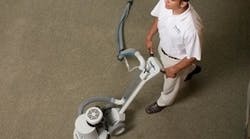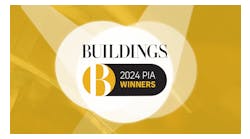All property managers and owners hope that their properties will become both long-lasting and lucrative investments, but achieving this requires a proactive mentality. From interior renovations to signing a lease, managing property requires a great deal of involvement to be sustainable.
One of the most important parts of being a landlord is marketing your property to new tenants. More often than not, it’s that first impression the tenant has that will make him or her sign the lease.
Additionally, while each potential tenant has his or her unique preferences, every tenant expects the living space to be clean and healthy. Meeting this expectation requires a bit of work; but fortunately, there are some great resources you can tap into to make the process simpler and more efficient.
Here are four things you can take care of as a landlord to make sure your building is clean and safe and wows your potential tenants.
1. Deep Clean the Carpets
Carpets and other soft furnishings act as air filters in the home, trapping allergens and bacteria that would otherwise spread freely through the home. In fact, carpets can hold as much as 200,000 bacteria per square inch, which is why it’s so important to clean them.
When cleaning, use a vacuum that utilizes a three-stage high-efficiency particulate air (HEPA) filter. Unlike traditional vacuums, which expel dust and allergens back into the room as you clean, this kind of filter traps 99.7% of small particles directly into its chamber.
A surface cleaning from a vacuum, however, won’t provide the necessary deep cleaning that carpets often need. Property owners should also hire a professional carpet cleaning service in between each tenant to eliminate the deep-down allergens, remove the bacteria and germs hiding in the fibers and increase the carpet’s longevity.
Related: How Low Moisture Carpet Cleaning Can be a Green Option
Extraction cleaning — the processes that pull up and physically remove allergens from the fibers of your carpet, typically using hoses and extraction tanks — is a safe and effective way to rid the fibers of dirt, allergens and excess cleaning solutions.
Avoid providers that use soaps, detergents or surfactants in their general cleaning product. In addition to being less safe for the carpets and less healthy for occupants, these chemical might leave a sticky, dirt-attracting residue that results in carpets getting dirtier faster. Instead, look for services that use nontoxic and green certified cleaners, sanitizers and carpet-protecting solutions.
2. Scrub the Tile
Ceramic tile can add a classy touch to kitchens, bathrooms, hallways and even the outdoors. While tile and stone surfaces are stylish and durable, they aren’t immune to grime. Porous grout, tile and stone can act like a magnet for dirt, dust and other particles such as mold spores.
When cleaning tile, make sure to steer clear of cleaners that use bleach and other harsh chemicals, as those can transform the bathroom or kitchen into a hazardous environment.
Instead, find an alkaline solution that primarily consists of water and incorporates high pressure rinsing processes to penetrate deep into small, hard-to-reach areas. Finish with a penetrating sealer to ensure that your tile stays clean.
Considering that indoor environments can be two to 100 times more polluted than the air outside. You might want to bring a professional in to deep clean tile and grout lines, sanitize and apply a protective sealant. The sealant can remove the ground-in grime, allergens and bacteria, and leave the property safer, healthier and more appealing looking.
3. Dust the Blinds
Cleaning the blinds in your property is easy to forget, but blinds collect dust and debris easily. If they require a dusting, close the blinds on one side and use a microfiber cloth to wipe away all the dust. Then close the blinds on the opposite side and wipe away the dust from top to bottom.
You may need some professional assistance if the blinds have heavy dirt buildup, as that may require you to remove each blind from its place and individually wash them. Contact an expert to see what would be best for your property’s health, your wallet and your time.
4. Replace Air Filters
A filter of an HVAC unit will tend to get used year-round, so a property owner should try to replace them on a regular basis — once every 90 days. Changes, however, may need to be more frequent — every 45 to 60 days — if your current tenants have pets or allergies. Not only will this simple task improve your property’s circulation and limit allergens, but replacing an air filter will also make your property more energy efficient.
Read also: How to Get the Most out of Your Air Filtration System
Making sure your property is safe and clean is essential to attracting tenants and retaining them. With these techniques, not only will you ensure that your property is as clean as it can be, but you will also be protecting your investment and providing your occupants with a safer, healthier and more pleasant experience.
Two hand-picked articles to read next:

